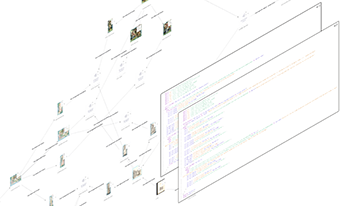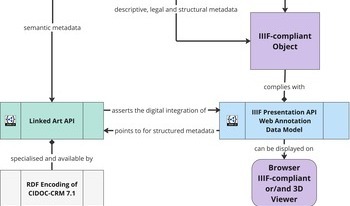
The increasing availability of digitized archives presents new opportunities for scholarly research, yet effective reuse of these resources requires infrastructure that is interoperable with open data. This paper presents a novel annotation platform for the scholarly research on visual material, based on a customization of the ResearchSpace platform. By directly integrating images served via the IIIF Image API (v2/v3), the system ensures a high level of digital provenance and source reliability, crucial for research in history-oriented humanities. The paper outlines the platform’s technological framework, highlighting how its architecture fosters deep scholarly engagement with digitized materials and exploring the potential applications of annotation outcomes. Additionally, it discusses the challenge of streamlining the connection between researchers and digitized archives. Future improvements will focus on automating metadata integration and tackling interoperability challenges across diverse data models.

This paper addresses the concerns of the digital heritage field by setting out a series of recommendations for establishing a workflow for 3D objects, increasingly prevalent but still lacking a standardized process, in terms of long-term preservation and dissemination. We build our approach on interdisciplinary collaborations together with a comprehensive literature review. We provide a set of heuristics consisting of the following six components: data acquisition, data preservation, data description, data curation and processing, data dissemination, as well as data interoperability, analysis and exploration. Each component is supplemented by suggestions for standards and tools, which are either already common in 3D practices or represent a high potential component seeking consensus to formalize a 3D environment fit for the Humanities, such as efforts carried out by the International Image Interoperability Framework (IIIF). We then present a conceptual high-level 3D workflow which highly relies on standards adhering to the Linked Open Usable Data (LOUD) design principles.